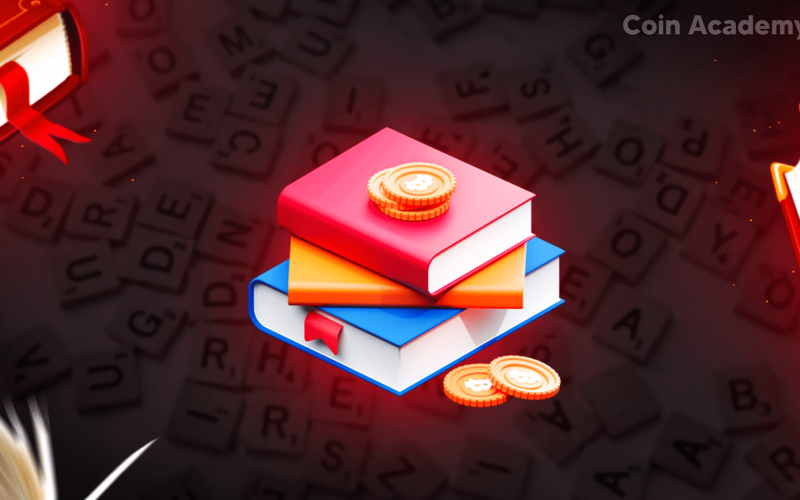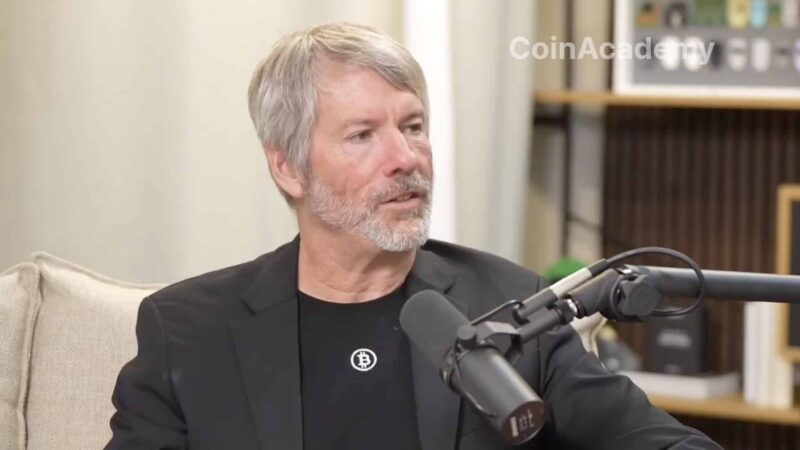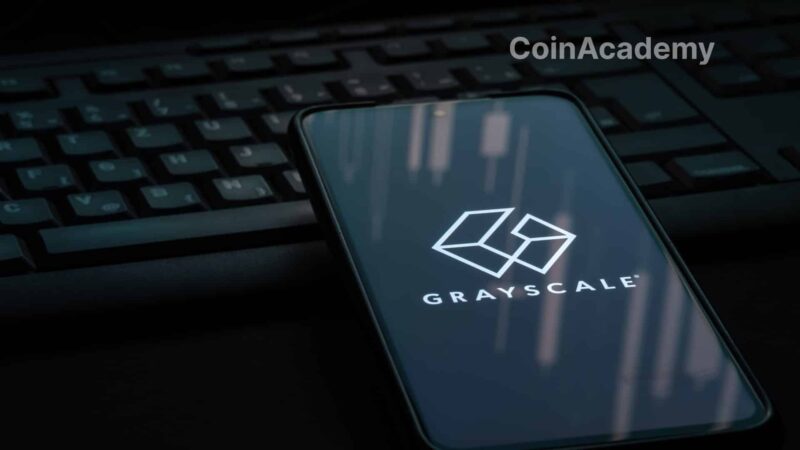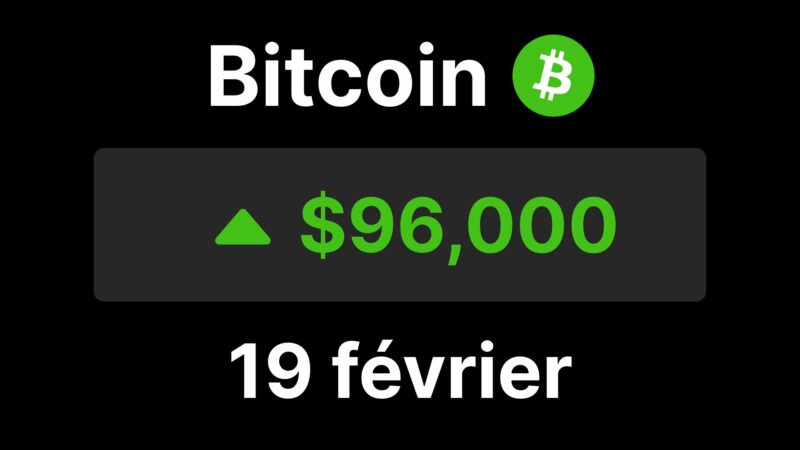Discover our Web3 and NFT glossary of the main terms and expressions used on the Crypto Twitter in English.
NFT and Web3 glossary from A to D
A
AB: AB stands for Art Blocks, the leading marketplace or platform for buying and selling NFTs that fall into the “generative art” category (see definition below).
Address : an address in the cryptocurrency world often refers to the sequence of characters representing the public address of your crypto wallet. This is shared publicly and makes it easy to find you on the blockchain. It can be similar to a bank statement.
Airdrop: An Airdrop is a giveaway of a token, often an NFT, that is sent to eligible wallets for free.
Alpha: An Alpha is quality investment advice or information that is still unknown to the majority of market participants.
AMA: AMA stands for “Ask Me Anything”. It usually refers to a Q&A session open to the public.
Anon: Anon is the abbreviation of the word anonymous. This term is generally used to address an audience on the web, which is often anonymous.
Ape: Ape, which is a race of great monkeys, refers in the cryptocurrency world to impulsive investors, making decisions without reflection and often facing big risks. Ape is also used as a verb to jump into a risky investment.
Asset: An asset is a property. In crypto it can be a token like a cryptocurrency or an NFT.
B
BAYC: The acronym of Bored Ape Yacht Club, one of the most popular NFT collections on the market.
Bear: Bear is a reference to a negative market sentiment through the metaphor of the bear facing the bull. The bear attacking towards the ground pulls the price down. The market can be bearish when the price falls, but an investor can also be a bear when he is pessimistic.
Blockchain: Blockchain is the core technology of Web3. It is a network designed to make every transaction within it secure and unforgeable.
BTFD: BTFD is an acronym for “Buy The Fucking Dip”, in reference to a price drop. Often used ironically, this expression is usually intended to lighten the mood during difficult times in a market.
BUIDL: BUIDL comes from the verb “to build”. Again, this expression is often used to make people laugh in a crisis. It refers to the developers or key players of a project, blockchain or NFT collection, by asking them to do something that could have a positive impact on the price.
Builder : A builder is a person who builds something for a project or a blockchain. It is often a developer or a stakeholder with a strong presence in a community.
Bull: In contrast to the term bear, a bull attacks upwards with its horns. The market can be bullish when prices are soaring and an investor can be bullish when he is optimistic.
Burn: a burn is referring to the destruction of tokens, whether they are cryptocurrencies or NFTs, the purpose being, very often, to reduce the supply in circulation or to activate an original mechanism.

C
Cold wallet: Cold wallet refers to offline digital asset wallets that are more secure than most other ways of storing cryptocurrencies or NFTs.
Collectible: A collectible is simply a collector’s item, whether it is rare or not.
CT: CT is the acronym for Crypto Twitter and corresponds to all users of the social network Twitter whose main interest lies in Web3.
D
DA / Dutch Auction: A Dutch Auction, often called DA, is used for the first sale of a highly anticipated NFT collection, this method is a kind of reverse auction. The starting price is as high as possible and decreases as time goes by, until a floor price is reached or every item in the sale is purchased.
DAO: A DAO is a Decentralized Autonomous Organization. These governance systems give a voting right regarding the direction of a project to the owners of a token whether it is in the form of a cryptocurrency or NFT.
Degen: Degen is short for degenerate. It generally refers to an investor who rushes into a purchase without doing any research first. More recently, the term is mostly used by members of the Web3 community to define themselves as buyers of NFTs.
Delist: Delist simply means withdrawing an NFT from sale. This practice allows, by reducing the available supply, to artificially increase the price in order to attract new buyers.
Dev do something: Often used ironically, the phrase “Devs do something” is a cry for help usually seen during a price drop.
Drop: A drop can refer to a sudden drop in price, but is more commonly used to refer to the sale of a particular coin or NFT collection.
Dump: To dump is the act of selling a cryptocurrency or NFT without a second thought. Often used in the expression “Pump and Dump”, this term refers to the unscrupulous sales of influencers who have temporarily inflated the price of one of their assets.
DYOR: The acronym DYOR stands for “Do Your Own Research”. Whether it’s a cryptocurrency, blockchain or NFT project, this phrase encourages you to dig deep and not depend on the opinion of an influencer or anything else.
NFT and Web3 glossary from E to H
E
ENS: ENS is the acronym for Ethereum Name Service which is a domain name service on the Ethereum network that allows a unique nickname to be used for each public address.
ERC-20: ERC-20 is the technical standard used by most tokens on the Ethereum blockchain.
ERC-721: ERC-721 is the technical standard used by the majority of NFTs on the Ethereum blockchain. Unlike ERC-20 tokens, these NFTs are not fungible.
F
Fat finger: Fat finger refers to an action made by mistake. It is often the result of a wrong sale price, resulting in a loss.
Fiat: Fiat currencies include all currencies issued by governments. Currencies that cryptocurrency users often have a low level of confidence in.
Flip: A flip is a quick switch from a buying perspective to a selling one. “Flipping NFTs” means selling NFTs quickly, looking to take profits.
Floor: Floor is often used to refer to a “floor price”. It corresponds to the minimum price to buy an NFT of a certain collection.
Fomo: Fomo stands for “Fear Of Missing Out”. This feeling pushes many people towards an impulse purchase, in order not to miss a potential profit.
Fungible: Fungible, present in the word NFT, represents an interchangeable good, which can be replaced by an identical good with no real difference. A fungible token, a cryptocurrency, such as bitcoin, can be replaced by another bitcoin. In contrast, a non-fungible asset is unique, like each NFT (non-fungible token).
Forge: Forge can mean “to forge” or “to counterfeit”. In the world of NFTs, a new NFT can sometimes be forged using different mechanisms.
Fren: Fren comes from the word “friend” and is often used in the NFT community.
FUD: FUD stands for “Fear, Uncertainty and Doubt”. A FUD is an event or new information designed to scare the cryptocurrency community, potentially in order to drive prices down.
G
Gas: The gas corresponds to the transaction costs of a blockchain.
Gas war : A gas war is an event where a large amount of people want to validate transactions first, causing network congestion. This competition is seen as a war where those who are willing to spend the most on their transaction fees will be the winners. During the mint of highly anticipated NFTs, a gas war can take place.
Genesis: Genesis is the first of something. In Web3, this often refers to the first NFTs in a collection or the first NFT collection of an artist.
GM: GM stands for Good Morning. Widely used in the year 2021, this expression was used to bring a minimum of positivity into the lives of many people. It was then taken up by many brands or personalities wishing to “infiltrate” the community before losing its value.
GMI: GMI is an acronym for “Gonna Make It”
GN: GN stands for “Good Night”.
H
Hardware wallet: A hardware wallet is exactly the same as a cold wallet.
HODL: HODL is a distortion of the verb “hold”, referring to not selling an asset. This distortion comes from a tweet by GameKyuubi in 2013, which has become a cult.
Hot wallet: A hot wallet, as opposed to a cold wallet, is thus a hot crypto asset storage wallet. It is so named because it is online and therefore less secure than cold storage. A simple example of a hot wallet is a classic Metamask wallet.
NFT and Web3 glossary from I to M
I
IPFS: IPFS stands for Inter Planetary File System. The interplanetary file system corresponds to a web architecture distributed to be decentralised. The aim is to secure files stored on servers. Many good NFT projects store their files using IPFS technology.
IRL: IRL stands for In Real Life. Often used by video game players or members of the Metaverse, it distinguishes a digital life from a “real” life.
L
LFG: LFG is an acronym for “Let’s Fucking Go”. This expression is often used by the NFT community to encourage or congratulate each other when there is a price increase or a significant sale.
Looks rare: expression used very frequently to refer to NFTs that look rare before being used for anything that might appeal to the other party.
LP: LP stands for Liquidity Pool and is widely used in decentralised finance, but also in some innovative uses of NFTs.

M
Maxi: A maxi, from the term maximalist, is a person who swears by one thing. A Bitcoin maximalist, for example, refuses to give importance to other cryptocurrencies.
Metadata: Metadata is data that provides information about other data. For most NFTs, the metadata is the data that many confuse with the NFT itself. Indeed, the NFT usually has a link, redirecting to the metadata, which defines the important elements, such as the attributes of an automatically generated NFT, for instance.
Metaverse: The Metaverse is a vague term that could represent any virtual world. More recently used to define a “new form of virtual universe”, the Metaverse has been around for a very long time, with video game players already living in virtual worlds many years ago.
Mint: The mint corresponds to the birth of an NFT when it is registered on the blockchain.
NFT and Web3 glossary from N to Q
N
NFA: NFA stands for “Not Financial Advice”.
NFT: NFT is the acronym for “Non Fungible Token”, which is defined earlier in this glossary.
NGMI: NGMI stands for “Not Gonna Make It”. In opposition to GMI, this expression is often used by the Web3 community to mock people who refuse to understand new technologies by declaring that they will not become rich thanks to them.
Node: A node is an actor that participates in the decentralisation of a blockchain by verifying transactions in exchange of rewards.
O
OG: OG stands for Original Gangster. The term simply refers to forward-thinking people who have been around long enough to gain notoriety or respect from their community.
Off chain / On chain: Off chain means outside the blockchain and conversely, on chain refers to something present directly on the blockchain. The few NFT collections that are stored directly on the blockchain are highly respected.
OS: OS stands for OpenSea, the main platform for buying, selling and creating NFTs.
P
P2E / Play to Earn: A Play to Earn is a game that allows you to generate revenue by playing. In most cases, the player is rewarded with tokens of a cryptocurrency that can be resold afterwards.
Paper Hands: In contrast to diamond hands, paper hands are adjectives given to people who quickly (and often at a loss) resell their assets such as their cryptos or NFTs.
PFP: A PFP is a profile picture. This term is often used to define NFTs whose main purpose is to be used as an avatar.
POAP: POAP stands for “Proof Of Attendance Protocol”. A POAP is usually an NFT granted to a group of people to prove their participation in a particular event.
Probably Nothing: “Probably nothing” is used ironically to define a major event, often promising mass adoption of Web3.
Pump: A pump is a sudden upward movement in the price of a crypto or NFT. The expression “pump it” therefore represents an order to raise the price.
Punks: Punks refer to one of the most iconic NFT collections: CryptoPunks. Owners of CryptoPunks NFT’s can also be called punks.
NFT and Web3 glossary from R to Z
R
Reveal: Reveal is the phase where the NFTs of a collection take shape and differentiate themselves from each other. Some collections do not have a real reveal phase when each NFT is directly and fully visible from the moment it is minted.
Rekt : The expression “getting rekt” means “losing”. In crypto, getting rekt often means losing a large amount of money.
Roadmap : The roadmap of a project.
Rug / Rug Pull: A rug pull is the action of members of a project abandoning the project by taking investors’ funds with them. Rug pulls are common in crypto currencies and many people do not hesitate to promise great futures to their investors before leaving with the cash.
S
(The) Sandbox: The Sanbox is an online video game considered one of the leading Metaverse games today.
Seed phrase: A seed phrase is a string of words used to access a cryptoasset wallet. NEVER give out your seed phrase.
Seems legit: Seems legit is often used in a sarcastic way to make fun of a poorly disguised scam. Used in the first degree, this expression can then give a positive opinion on the reliability of a smart contract or a platform.
SER: SER comes from the French word sir or “monsieur”. In a world where common or colloquial language is the norm, the use of “ser” is often ironic.
Shill: Shill represents the act of promoting a cryptocurrency or NFT.
T
Token: A token is an asset on the blockchain. A cryptocurrency or NFT can often be simplified by this term.
TL;DR: TL;DR stands for “Too Long; Didn’t Read”. TLDR is usually a summary of a text that is not easily digestible.
W
WAGMI: WAGMI stands for “We’re All Gonna Make It”, the extension of GMI meaning we’re all going to get rich. Although this phrase is a lie, it brings a lot of positivity to the Web3 community.
WEN: WEN is a special form of the word “when”, used mainly to ironically ask for the arrival of something expected, whether it is in anticipation of Ethereum 2.0 or a new price record, WEN lambo?
Web3 / Web 3.0: Web3 can be seen as the universe of the Internet where account login and identification is done through the use of a cryptoasset wallet. Web 3.0 can also be seen in the whole universe that touches on cryptoassets in general.
Whale: A whale is a person who owns a large amount of cryptocurrencies or NFTs. A whale can move the price of an asset by its actions alone.
Wrap: A token can be found in a Wrap. For example WETH is the wrapped version of ETH. The value of WETH is therefore fixed to that of ETH in the same way as a stablecoin whose value is stuck to the dollar. Wrapping a token allows it to be used differently.
X
XYZ: XYZ is a popular domain name referring to the end of the alphabet and the XYZ generation. Its history with Google through Alphabet and its various references make it a perfect choice for many Web3 companies wishing to distinguish themselves from the classic .com.




